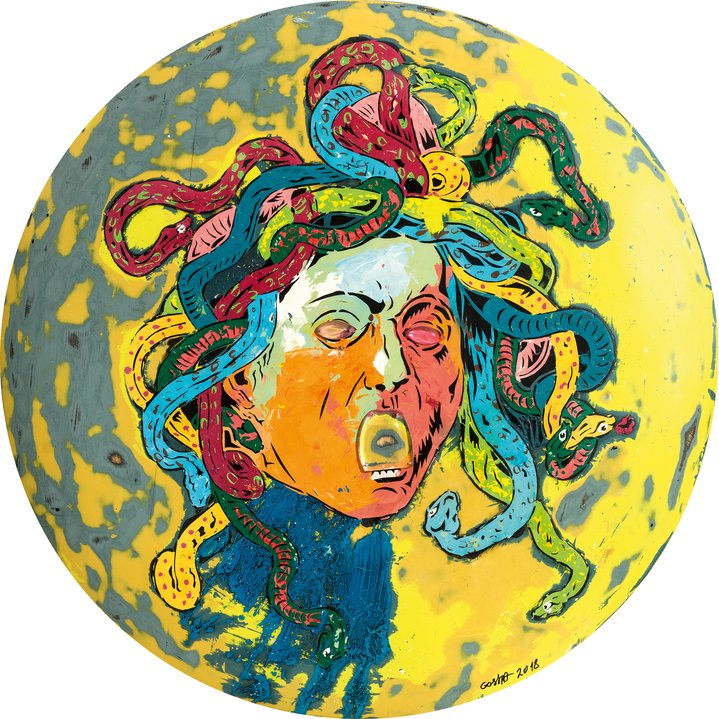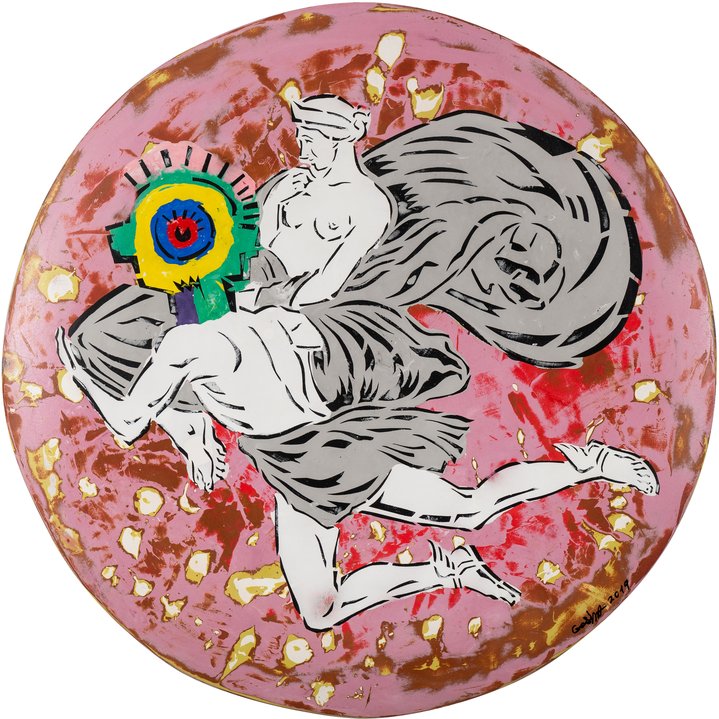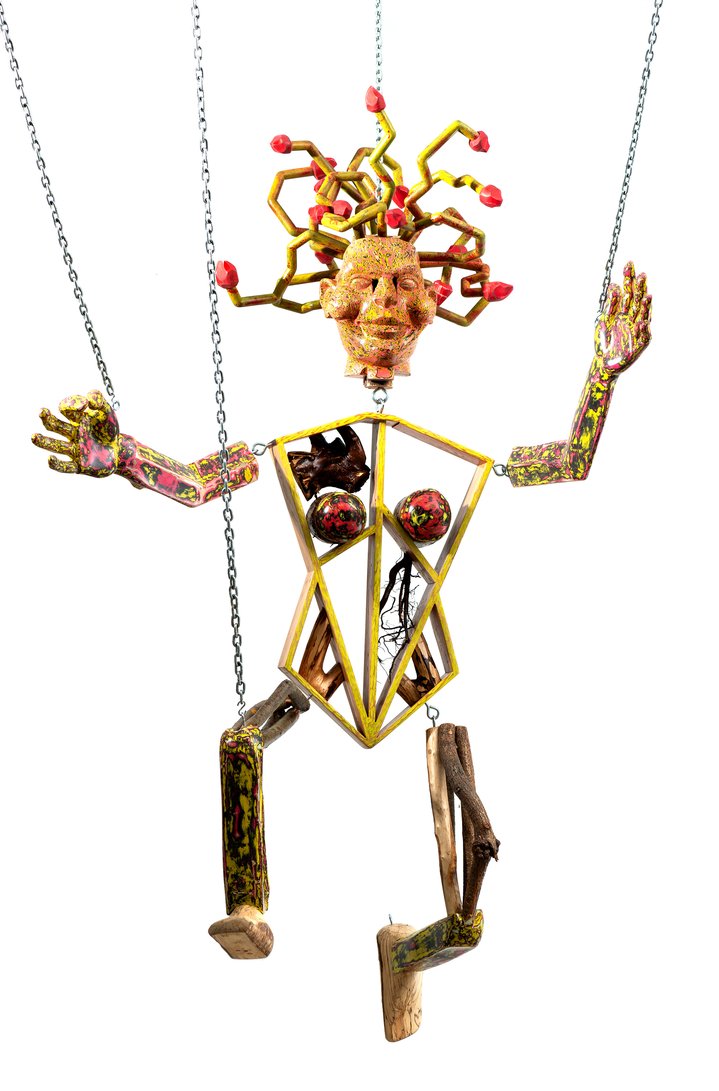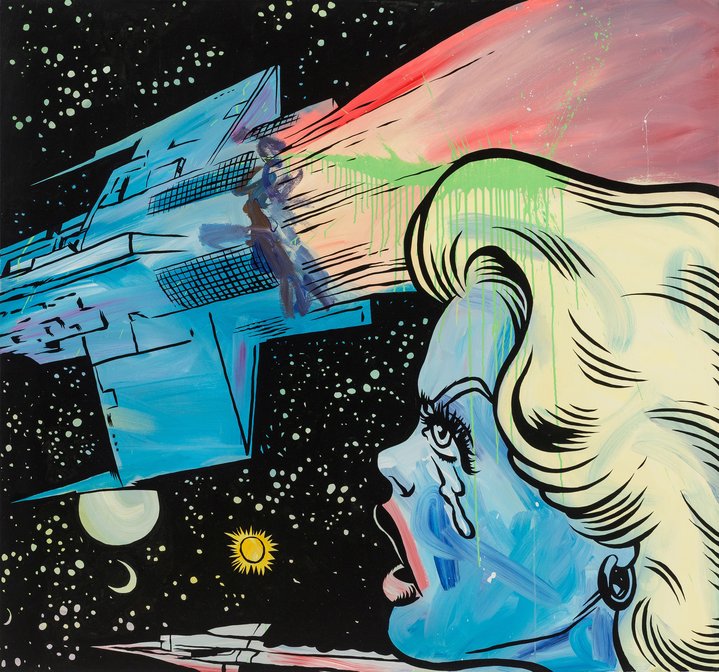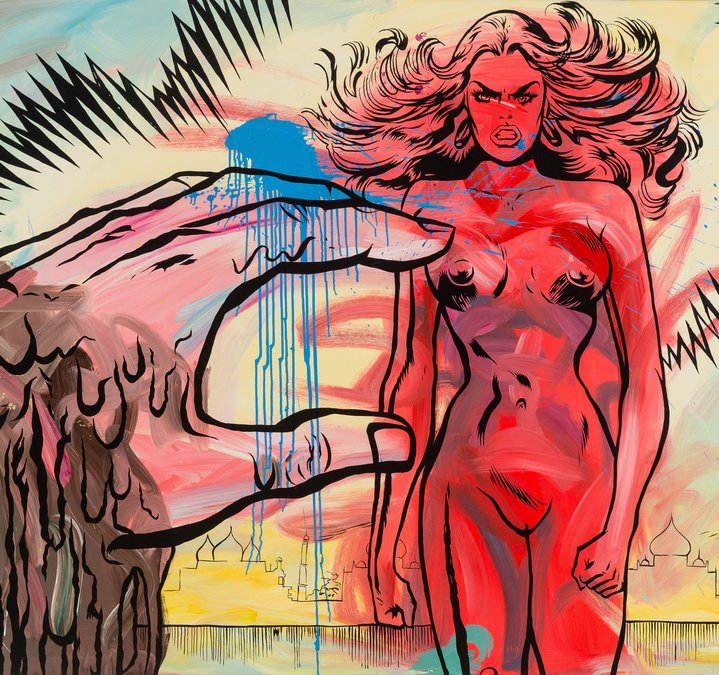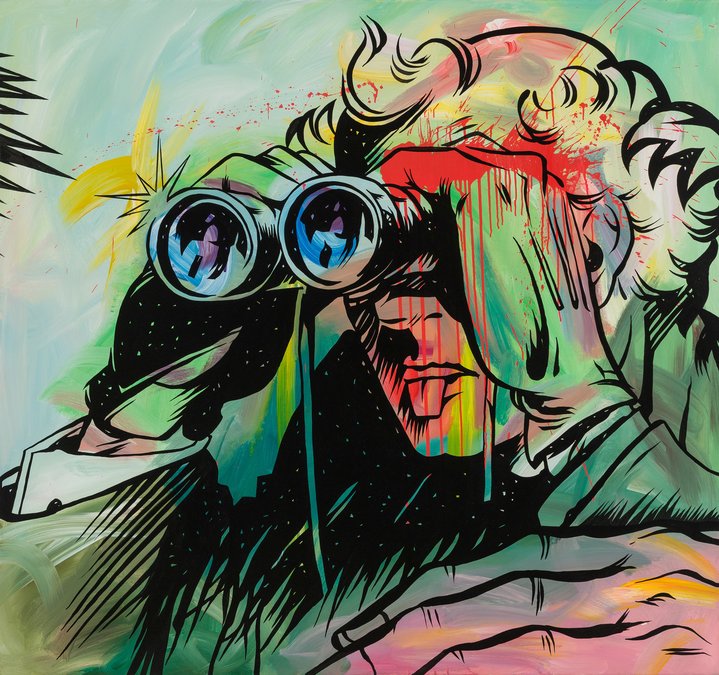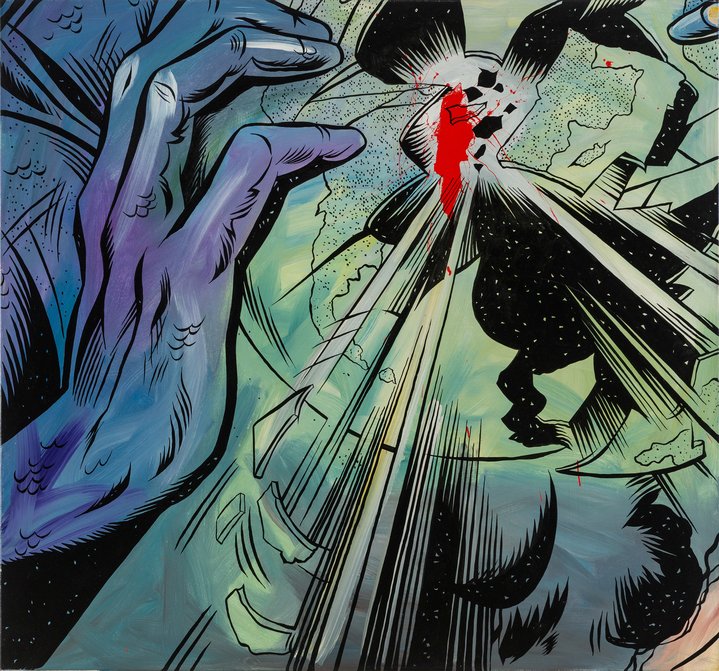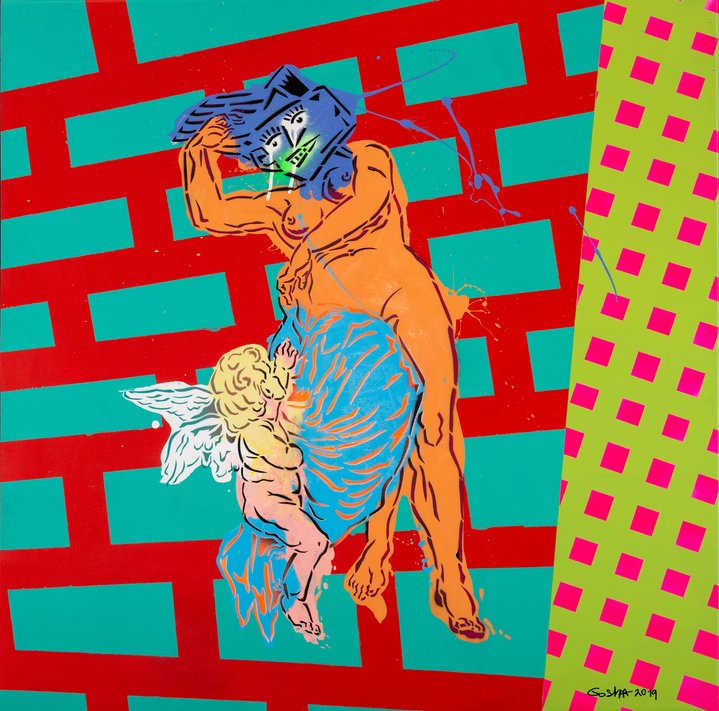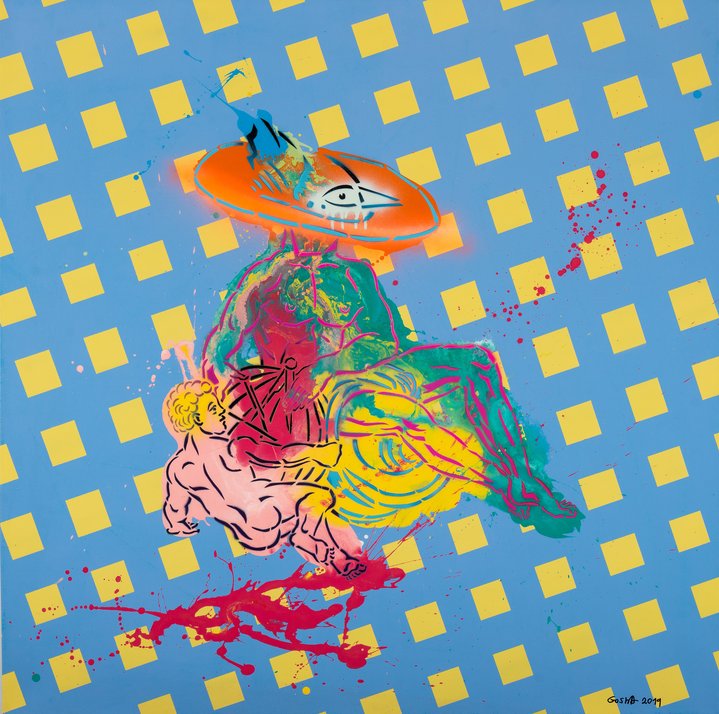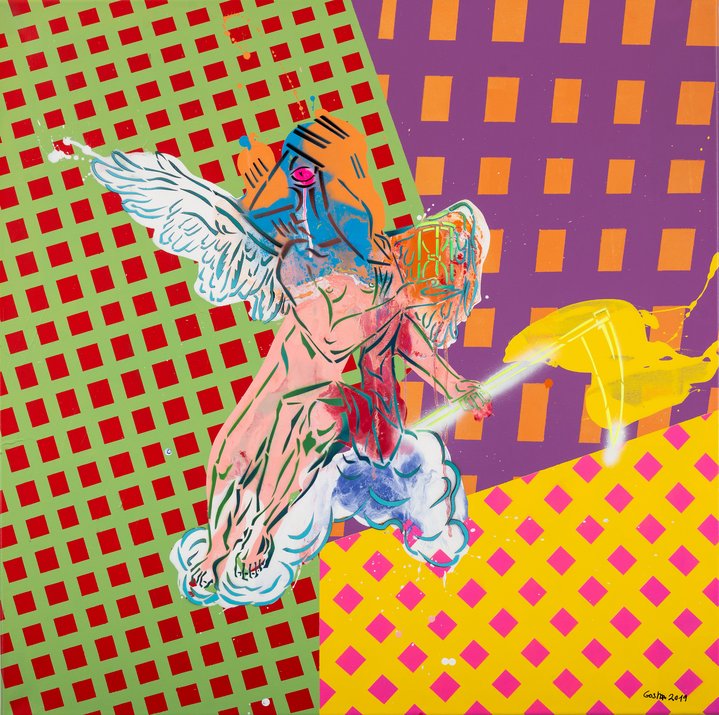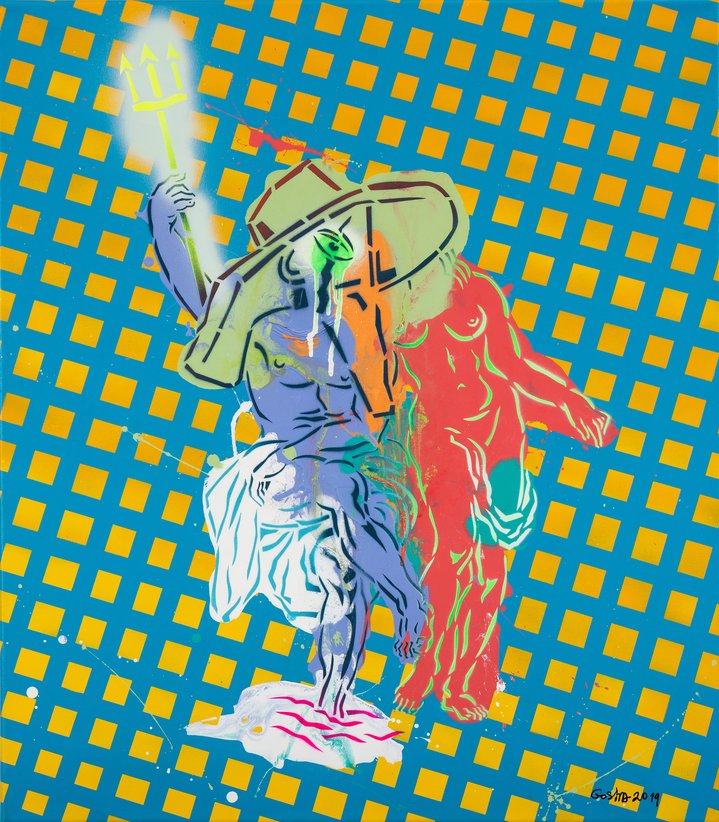Gosha Ostretsov: to the Sun and back

A Moscow artist inspired by science and popular culture has unveiled a solo show which merges sci-fi imagery with ancient mythology.
It is a long way from Moscow to the sun, but in a sense, this is the journey that the artist Gosha Ostrestov embarked on earlier this year when he began preparing for his latest exhibition at the city’s GUM-Red-Line Gallery.
In 'Conquerors of the Sun', which runs until November 19, Ostretsov stages his own mythical battle by drawing on one of the most fraught human pursuits of the last century: producing energy the way the sun does, through nuclear fusion, but in a controlled manner and for peaceful purposes.
Ostretsov’s protagonists are the eight planets of our solar system, which he has anthropomorphized into surreal sculptural combinations made of wood, paper, metal and plaster. Some of their parts, especially the recognizably human ones, like hands and feet, practically quiver in marbled neon hues.
In one collage, Venus turns into a cyclops with a drippy green eye. In another, the head of a bald man with spectacles floats past planets. Gods, full-breasted nude women, and spaceships appear and disappear through transitory skies.
These creatures are all engaged in a common battle to defeat Medusa, who symbolizes the sun, and to revive the heroes she has already turned into stone. Doing so would mean not only surpassing their personal limits (as it were, of the solar system), but also harnessing and recalibrating the sun’s tremendous energy, which had thus far only been used for destruction.
The artist’s “victory over the sun” is also an attempt to press us beyond the visible, everyday order of things and towards different modes of consciousness and experiences of time.
The fantastic narrative Ostrestov has created around the real, yet incomprehensible power of the sun, is a contribution to the ongoing debates about how to confront global warming.
The artist knows that we are living in a way that constantly imperils our own existence, but he is interested, rather than fearful. In a recent interview, he elaborated on his fascination with change as it affects our climate, as well as humanity’s obsession with imagining space, time, and life beyond our planet.
To enter into Ostretsov’s world is to leave behind much of what feels to be familiar and to begin to think that everything outside it is trivial and unnecessary.
You only need only to speak with Ostretsov for a few minutes to understand that he is deeply motivated by philosophy, mythology, scientific theories and their cultural manifestations.
“This is when the insanity begins. Many of today’s mythologies spin off from science. For example, thanks to quantum physics, we’ve now reached a kind of paradox: we don’t know what is inside the sun. Its energy and volume surpass every means that we have to measure it,” the artist said as he dug through his I-phone to show a simulation of the unfathomable number of galaxies in the universe.
“I believe there is some sort of life on every planet. They keep finding ice on planets. Even on Mercury, which is very hot and close to sun, there are craters where ice forms when it turns away from the sun.”
At several points during our conversation, I thought he would have been content to speak only of science, but he often circled back to points where scientists struggle, wishing that they’d admit more of what they (and we) don’t know.
Ostretsov’s puzzle seems to be how to begin to penetrate and visualize these alternative worlds, and to let them penetrate us through culture. For him, both art and science have equal claims on reality.
It is conventional to think about Ostretsov’s body of work as a myth-making project. I said as much to him, but he shot back that “all artists to some extent create their own myths.” To understand Ostretsov’s particular form of myth-making, it is useful to know that he came of age aesthetically with the Moscow Conceptualists as models, absorbing that generation’s absurd and satirical use of language and political imagery into his own practice.
In his youth, he trained at the Theater Art School at the Bolshoi Theater and continued to explore costume art and performance while working in the Paris fashion industry in the 1980s and 90s. Comic strips and superhero culture provided crucial form and content to his work of the past two decades.
One of his longest and most well-known multimedia installation projects is called 'New Government', in which he imagines artists as superheroes, who wrest control from a despised regime. Grotesque latex masks provide a sense of horror and complicity to its characters. Ostretsov himself pops up in the role of a dictator, propaganda minister and dissident, implicating the artist in both the misery of the scene and its possible redemption.
Like his prior work, 'Conquerors of the Sun' neither preaches nor claims to reveal a truth at the end of the story. Instead, it seems to be more about getting us think beyond the hardwired limits of our species and, as he puts it, to approach art as an “means of self-growth or exploration.”
“I’m done with earthlings. By now, I’ve understood them all. I’m looking elsewhere,” he claims, but whatever Ostretsov finds, it will surely end up haunting the rest of us.






